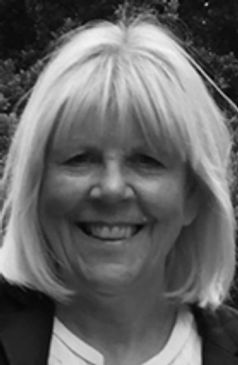Signed in as:
filler@godaddy.com
Signed in as:
filler@godaddy.com
In early 2025, under the guidance of the SEGH Fellows, the SEGH board created a new level of membership: Honorary Lifetime Fellow.
This is an invitation-only membership level and reflects the fact that the individual concerned has been very active within SEGH and the field which SEGH represents.

I worked at the British Geological Survey from 1989 on the Geochemical Survey Programme in Wales; then I managed BGS Enquiries until retirement. I joined SEGH in 1990 and with my late husband, Malcolm, organised SEGH1994 conference at BGS, Keyworth and we were heavily involved in SEGH1997 along with Pat O’Connor at the Geological Survey o
I worked at the British Geological Survey from 1989 on the Geochemical Survey Programme in Wales; then I managed BGS Enquiries until retirement. I joined SEGH in 1990 and with my late husband, Malcolm, organised SEGH1994 conference at BGS, Keyworth and we were heavily involved in SEGH1997 along with Pat O’Connor at the Geological Survey of Ireland in Dublin. I have enjoyed many SEGH conferences since then especially Zambia in 2018.

Alex Stewart is a medical doctor with extensive experience at the interface between health and the environment. He worked in Pakistan for 20 years then in the UK Public Health service until his retirement. He volunteers in his village and tries to fit in some academic writing and preaching.

Brian's research was primarily concerned with the distribution of trace elements and heavy metals in soils, sediments and plants including the biological consequences of unusual accumulations of these elements, especially Ag, Cd, Cu, Hg, Pb, Se and Zn. Past projects included field studies, laboratory experimentation, plant growth studies
Brian's research was primarily concerned with the distribution of trace elements and heavy metals in soils, sediments and plants including the biological consequences of unusual accumulations of these elements, especially Ag, Cd, Cu, Hg, Pb, Se and Zn. Past projects included field studies, laboratory experimentation, plant growth studies and computer interpretation of data. Special emphasis has been put on baseline surveys and contamination problems in lead mining and smelting areas and pollution from paint and vehicles in urban areas. Studies of trace elements also included the possibility that human health may be adversely affected by the transfer of these elements through food chains. This was investigated by cooperation with epidemiologists working together in the same geographical areas. Last research projects were located in the USA, Lebanon and Jamaica. In Lebanon, continuing collaboration with Dr Samira Korfali of the Lebanese American Univerity (Beirut) on the chemistry of water and metal rich sediments in a high-carbonate river (Nahr Ibrahim) where flow conditions vary markedly over the wet and dry seasons. Extended to water quality problems in other catchments. In the USA, composition of bed sediments, chemical forms of sediment metals and dispersal of sediments downstream from pollution point sources and ultramafic rocks. In Jamaica (in collaboration with the International Centre for Environmental and Nuclear Sciences – ICENS): geological and toxicological interpretations of the occurrences of exceptionally high levels of Cd and other heavy metals in calcareous aluminous Oxisols, the parentage of these soils and associated bauxite deposits, chemical forms of the toxic metals, rare earth and other non-compatible elements as evidence of parentage, the role of faulting in generating metal anomalies. After retirement, collaboration on projects in Lebanon continued. In January, 1985 I took over the editorship of Minerals and the Environment and renamed it Environmental Geochemistry and Health, then a quarterly international journal which provided a forum for publishing geochemical results of interest to workers in the animal or human health fields or for epidemiological investigations with environmental chemistry implications. This is now published by Kluwer Academic Publishers, Dordrecht, Netherlands. Resigned from editorship in 2003 and now Editor Emeritus.

Iain Thornton, PhD, DSc, DIC is Emeritus Professor of Environmental Geochemistry and was until 2002 Director of the Environmental Geochemistry Research Group, Imperial College, London. He has over forty years of research experience in environmental geochemistry and geochemical mapping, the chemistry and behaviour of trace elements and met
Iain Thornton, PhD, DSc, DIC is Emeritus Professor of Environmental Geochemistry and was until 2002 Director of the Environmental Geochemistry Research Group, Imperial College, London. He has over forty years of research experience in environmental geochemistry and geochemical mapping, the chemistry and behaviour of trace elements and metals in soils and waters, and the effects of metal exposure on plant, animal and human health. He has also undertaken research into urban geochemistry in the UK, Hong Kong and Gibraltar. He is the editor of the standard text Applied Environmental Geochemistry and has published widely, as author and co-author of over 200 papers in refereed scientific journals, on sources and pathways of metals in the environment and their impacts. He is an elected Member of the Norwegian Academy of Science and Letters. He was President of the Society for Environmental Geochemistry and Health from 1985 to 1987 and was for many years a life member of the Executive Board. He was the first recipient of the J. Julian Chisholm Jr. MD. Award for outstanding contributions in the field of geochemistry and environmental health education. In 2003 he was made an honorary member of the International Society for the Biogeochemistry of Trace Elements.
This website uses cookies. By continuing to use this site, you accept our use of cookies.